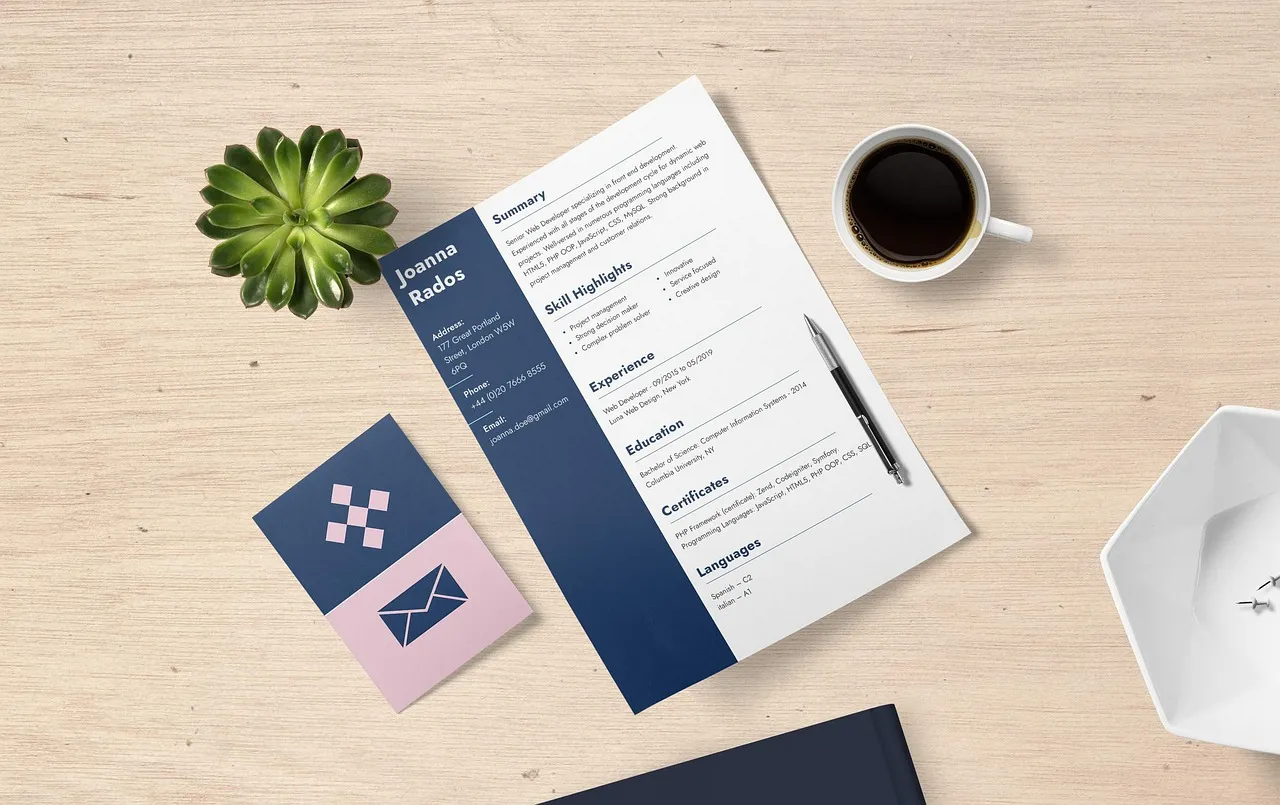Blog
Is the ATS system ignoring your resume? 5 tips to stand out your Job Application

5 Expert Tips to Get Your Resume Beats ATS Systems
Are you applying for a job but not getting a response? Before a recruiter even sees your CV, it may be rejected. The majority of employers filter resumes using Applicant Tracking Systems (ATS); if yours isn’t optimized, it won’t pass.
Before your resume is seen by a hiring manager, it may pass via an applicant tracking system when you apply for a job. The tracking system evaluates resumes as part of effective and efficient hiring procedures, selecting applicants based on specific criteria who appear to be the most qualified for the position. Learning how to use a tracking system is crucial if you want to send your resume to the recruiting manager, who will then determine whether to set up an in-person interview.
Understanding how applicant tracking systems (ATS) work and optimizing your resume to fit through their filters can increase the chances of a recruiter viewing it. This article will discuss five crucial pointers to make sure your resume beats applicant tracking systems and reaches a recruiter.
What Is an Applicant Tracking System (ATS)?
In order to streamline the hiring process, many businesses are turning to applicant tracking systems (ATS). It gathers, scans, and ranks resumes automatically. For a single job advertising, large firms receive hundreds of applications, making it difficult for a recruiter to read them all. This is where applicant tracking systems (ATS) come in; they reduce the number of candidates by looking for particular keywords, credentials, and experience on resumes.
Continue reading if you want to explore more about remote work and HR! How to manage a distributed workforce?
The drawback? Many extremely qualified applicants lose out simply because their resumes aren’t ATS-optimized. Making sure your resume is readable by both people and machines is crucial to avoiding this destiny. To improve your chances of being seen, use the appropriate format, structure, and content.
Why Should You Care About ATS?
ATS is now the norm for hiring in the modern digital age. Many smaller businesses and about 99% of Fortune 500 businesses are estimated to utilize applicant tracking systems (ATS) in some capacity during the hiring process.
Even if you’re a perfect fit, you run the danger of being immediately disqualified from consideration for positions if your resume isn’t ATS-friendly. As of 2024, nearly 65% of employers plan to use AI to reject candidates, indicating a growing reliance on AI-driven tools in the hiring process.
How do applicant tracking systems work?
In order to identify keywords that correspond with the job description, applicant tracking systems scan your provided cover letter and CV. For further review by recruiting managers and human resources specialists, they also keep submitted resumes in a database. Any applications that the ATS considers a suitable fit for the position may be highlighted and ranked.
Best practices for getting your resume through an applicant tracking system
Making it through the application tracking system is the first step to improving your chances of getting hired. The following best practices can help you get your resume in front of the hiring manager and through the applicant tracking system:
- Apply only for positions that you are eligible for.
- Choose carefully which positions you apply for at a single company.
- Make use of appropriate keywords.
- Link your keywords to distinctive experiences.
- Add a section on skills.
- Make use of simple language.
- Write out acronyms.
- Send in a CV that is specific to each position.
- Keep your resume brief.
- Make use of simple formatting.
- Make sure the file type is correct.
- Update your information online.
- Include referrals in your application.
ATS-Friendly Resume: 5 Tips to Beat ATS?

Knowing how applicant tracking systems (ATS) work and how to properly format your resume to fit through their filters can increase the likelihood that a recruiter will view it.
Here are 5 tips to make your job application stand out:
Use a Simple, Standard Resume Format
Standard resume formats can be read by ATS systems. A unique design could mislead the software, but it might impress a human recruiter. Keep your design simple and tidy to avoid this. Tables, charts, pictures, and special characters should be avoided because they might not be properly read by ATS.
The ideal resume structure is conventional, with distinct titles such as “Skills,” “Education,” and “Experience.” Make use of commonly used fonts, such as Calibri, Times New Roman or Arial and maintain a font size of 10–12 points. Make sure your resume’s alignment, space, and structure are all the same. For instance:
Correct: Expert fonts such as Times New Roman and Arial
Incorrect: Decorative fonts like Comic Sans and Papyrus
Research indicates that resumes exceeding 600 words are 43% less likely to result in a hire, highlighting the need for concise and targeted content. Inconsistent formatting might cause important data to be misunderstood or overlooked by ATS systems, which scan and analyze content.
Avoid Headers and Footers
Information in headers and footers may be difficult for certain ATS systems to understand. Important information or your contact information may be missed if it is included in these sections. Your resume’s main body should contain all of your important details, like your name, phone number, and email address.
Additionally, refrain from placing necessary information in odd places like footers or side columns, such as job titles and dates of employment. Make sure your resume is organized properly because ATS frequently reads resumes in a linear approach, from top to bottom.
Use the Right Job Description Keywords
Screening resumes for particular keywords is one of the main purposes of applicant tracking systems (ATS). The job description frequently uses the same terms and expressions. As long as they relate to your experience, your resume should include specific terms like “digital marketing,” “SEO,” and “Google Analytics,” for example, if the job offering demands such expertise.
Featured article: How to perform a complete SEO competitor analysis?
Candidates are ranked by ATS systems according to how well their resumes fit the job description. Make sure your resume is specific to each position you’re applying for by including the most appropriate keywords. But watch out for keyword stuffing—it can backfire.
Here’s how to successfully incorporate keywords:
Correct: Naturally incorporate keywords like “project management” and “data analysis” in your job descriptions.
Incorrect: Avoid the immediate rejection that could come from listing a list of keywords without any context at the bottom of your resume.
According to Jobscan’s 2025 report, 99.7% of recruiters use keyword filters in their ATS to sort and prioritize applicants.
Use Bullet Points for Readability
Bullet points make your experience simpler to read for recruiters, who frequently scan resumes; this also holds true for applicant tracking systems. Additionally, bulleted lists make it easier for the algorithms to separate out different parts of your resume, which increases the likelihood that key information will be identified.
Featured Article: How chatbots and AI assistants are transforming HR?
Use bullet points to highlight your successes for each job you list, highlighting measurable outcomes. For example:
Correct: “Increased sales by 15% in Q1 through targeted email marketing campaigns.”
Incorrect: “Responsible for increasing sales.”
Measuring your accomplishments gives your resume additional weight and lends credibility to your statements.
Submit the Correct File Type
The incorrect file format is one of the most frequent reasons resumes are rejected by applicant tracking systems. Despite the fact that PDF files are frequently regarded as professional, not all ATS systems are capable of correctly processing them. Except in cases when the job posting expressly calls for a PDF, it is often safest to submit your CV as a Word document (.doc or.docx).
Since many applicant tracking systems can read Word documents, sending your resume in this format increases the chances that it will be correctly interpreted.
Conclusion
Optimizing your resume for applicant tracking systems (ATS) is essential, as 70% of resumes are rejected by these systems before they are seen by a recruiter. You can increase your resume’s chance of navigating applicant tracking systems (ATS) and reaching a human reviewer by following these five suggestions.
Spend some time testing your resume, making necessary formatting adjustments, and adding appropriate keywords. Making sure your CV is ATS-friendly can make all the difference in getting your next job in a competitive job market.
Share
15 Minutes Free Discovery Call
How Zrafted Can Help Businesses?
- Contact Centre Solutions
- Managed IT Services
- Digital Marketing
- Business Process Outsourcing
- Virtual Assistance
- E-Commerce

